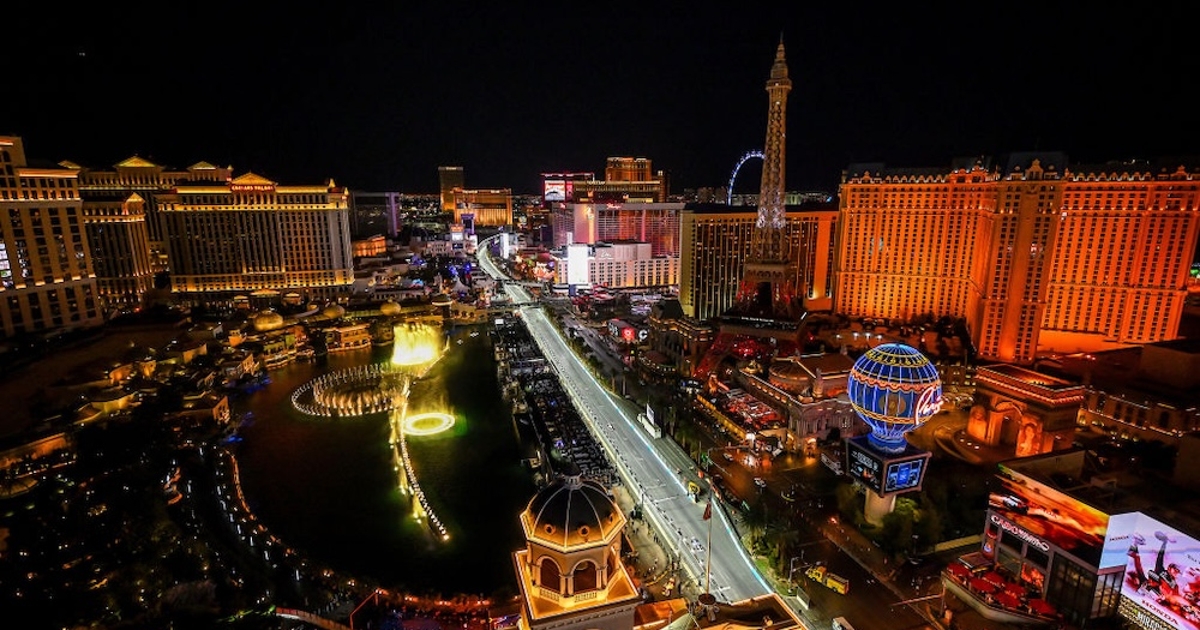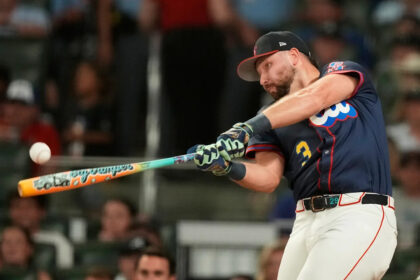Emily Prather, the race’s president and CEO, said the Las Vegas Grand Prix is becoming a halo event not only for the city of Las Vegas, but also for F1 as a business.
Las Vegas will join the calendar in 2023, with F1 investing heavily in property and event-related programs in the first year before taking a more conservative approach last year. Ahead of a third year in which the race plans to “return to prominence”, Prather, who is also F1’s chief commercial officer, said the race had become a major event for both the city and the sport.
“It’s a halo event in Las Vegas, which of course I mean double, but the benefits of Las Vegas to the F1 ecosystem are also starting to prove their worth,” Prather said. “A lot of things can happen in Las Vegas that you wouldn’t want to see at any other traditional racetrack.
“But people will remember the Lego-like idea that everyone saw in Miami was launched in Las Vegas last year. And Las Vegas seems to have given the sport, especially me and my team, the confidence to try some different things, because it’s like everyone agrees that anything is acceptable in Las Vegas.”
“So, I don’t know if we’re going to do it at a traditional racetrack in Monza or what you guys have, but it allows us to push some boundaries. But it also helps us grow our creativity and our ecosystem.
“I know you all have different opinions about what we did at the O2[F1 75 Live launch event]but if we hadn’t done it in Las Vegas we would never have done the O2 because we didn’t really realize the production capacity that we had in-house.
“We’re giving ourselves this opportunity to commercialize the sport and engage with fans in a completely different way. And it’s not just because of Las Vegas. It’s given us the ability to say, ‘Well, we tried it and people didn’t hate it, so we can do it!'” So it’s sometimes affectionately referred to as the test bed, and I think that’s definitely helped us grow our fan base.
“You can also see the whole merchandising that’s going to come from us being in Las Vegas and having the opportunity to do that. The lines[at The Hub]are hours long, 600 people in line. And we’re not doing anything revolutionary. We’ve just never done it before.”
“We had a chance to test it there and see how people like going to the Venetian and enjoy the collaboration…Again, I’m not suggesting Hello Kitty would work in Monza, but it certainly would work in the United States.”
“So I think for Las Vegas, this is a halo. For us, it had the same impact. And I think that’s why we all agreed that we wanted to continue doing it.”
Ticket options will be cheaper this year and we expect it to be a sold-out event. Prather said the fan base that actually attends the races attracted organizers in the first two years.
“I don’t think people understand that when we first started the race, after we announced the race, there was no procurement, nothing, nothing,” she said. “We were thinking, ‘How do we make this work?’ And we all thought, ‘Las Vegas is a city for super high rollers who want to gamble.’
“The great thing about Las Vegas, which we didn’t consider in the first year, and I’ll be the first to admit, is that it caters to the entire ecosystem. For example, you can go there and stay in a hotel room for $30 a night and feel like a king. If your budget allows it, that’s great.
“There are some luxury hotels, like the Wynn and Fontainebleau, that charge higher room rates, but it’s not just a problem in those specific areas. And I think when we first went there, we thought, ‘Yeah, we’re going to rely heavily on the super-rich and the big whales that come here to gamble.’ But the majority of hotel rooms are actually more affordable.
“So we’ve spent a lot of time repositioning the event from, ‘Oh, everything’s super expensive,’ to an event that actually caters to all audiences. And now we know that 80 per cent of our domestic audience is coming. When we first started this, we thought it was more of a 50-50 international event. I thought it was going to be something like , but given everything that’s happened so far, I don’t see that changing anytime soon.
“So we changed our packages and prices to reflect who was coming. You could buy a very expensive $25,000 ticket for high rollers, but to make sure everyone could attend, we had a $100 ticket.”
“So the challenge for us is getting people to know that. We have entry-level pricing and we want to educate people about that. So if it’s a Thursday night, you can get in for $50. There are no $50 tickets for any other race on the calendar. And people might say, ‘Well, Saturday should be $50.’ In my opinion, that’s not realistic.”
“We want to offer something for everyone and keep Saturday night like a super high-end night of entertainment and, of course, racing.”



